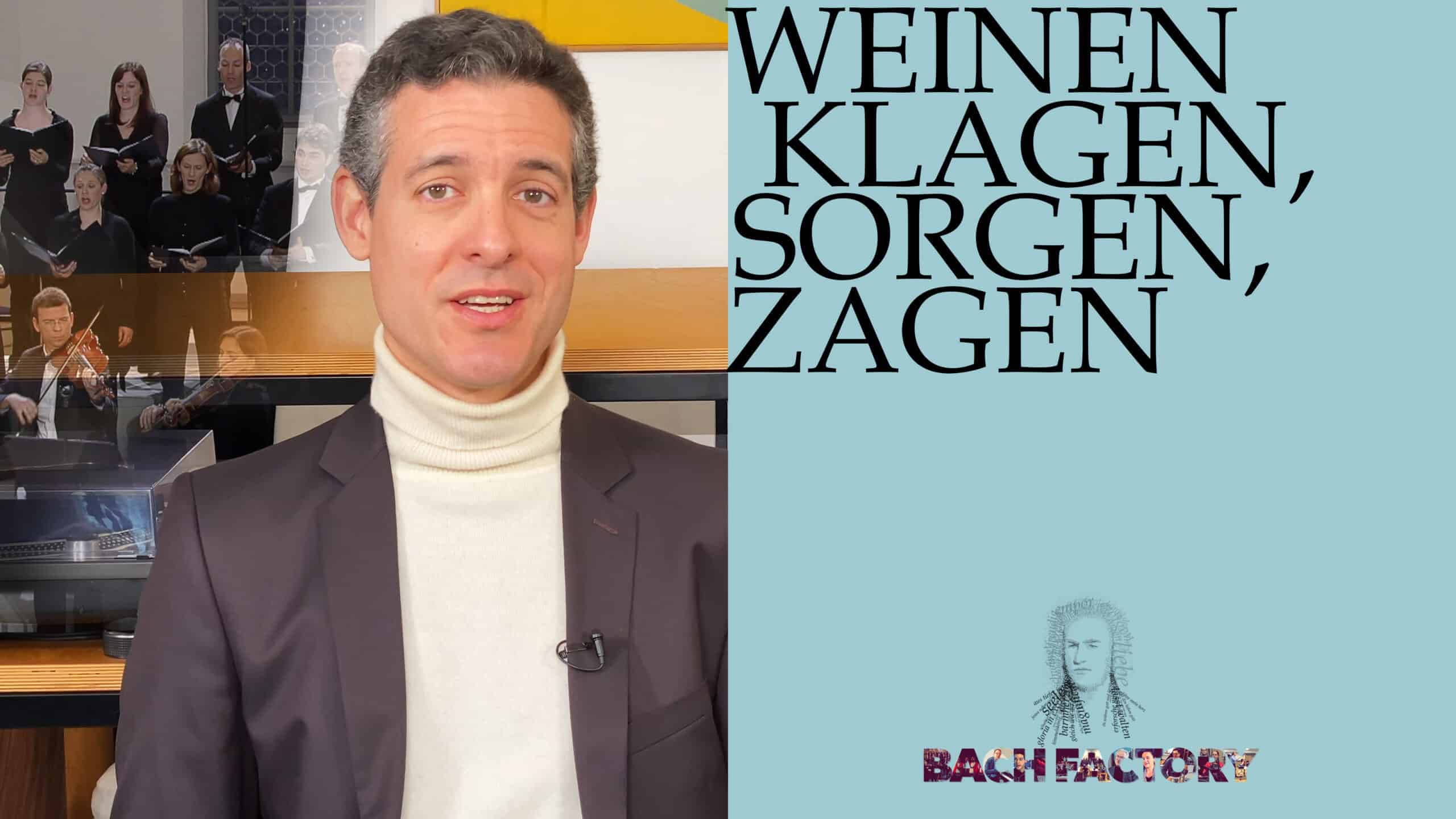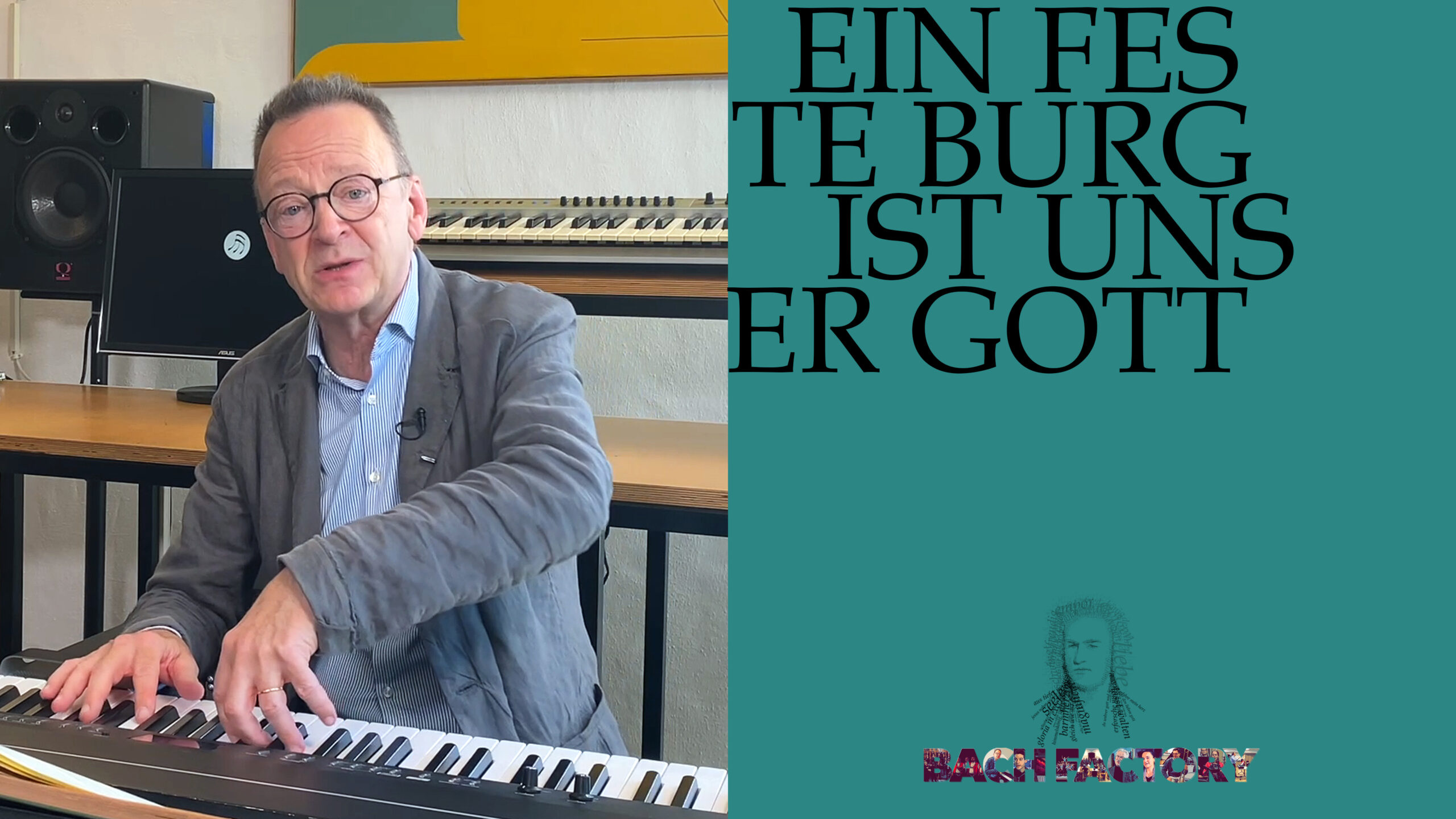Johann Sebastian Bach, BWV 27 «Wer weiß, wie nahe mir mein Ende» and Johannes Brahms, op. 45 «Ein deutsches Requiem»
Ana Maria Labin (Soprano), Jan Börner (Countertenor), Sören Richter (Tenor), Peter Harvey (Bass), Choir & Orchestra of the J. S. Bach Foundation, Conductor: Rudolf Lutz
Recording location: Kirche St. Johann, Schaffhausen, Switzerland, 5 November 2024, concert as part of the tour "With Bach and Brahms"
The live recording is available on all common audio streaming platforms.
Would you like to purchase the recording on CD?
Then we’d be happy to draw your attention to our crowdfunding campaign.
Accepting death and finding solace in the poignant sound ideal of the 19th century. 4o mini
I.
Death and dying are central to human experience, and they consequently feature prominently in cultural history. Indeed, the history of music is replete with works composed for mourning the dead, celebrating their memory, or, in a broader sense, contemplating the finitude of life and the hoped-for hereafter.
As a citizen of the 18th century, death loomed large in the life and work of Johann Sebastian Bach. Orphaned at the tender age of 10 and widowed at 35, Bach endured the untimely deaths of many family members, including several of his own children. By the same token, playing music at funerals and composing memorial works for prominent figures formed a significant source of both income and artistic challenge.
Much of Bach’s music for regular Sunday services, too, is concerned with the end of life and the accompanying wish for a peaceful death and the resurrection of the body. The cantata “Wer weiß, wie nah mir mein Ende” (Who knows how near to me my end is, BWV 27), composed in 1726, was written for the 16th Sunday after Trinity, whose Bible reading recounts the resurrection of Lazarus by Jesus. The cantata is based on a church hymn written in 1686 by Ämilie Juliane von Schwarzburg-Rudolstadt (1637–1706), Countess of Thuringia and author of chorale texts. Right from the opening movement, however, additions to the text by the unknown librettist form an oppressive link between the general sentiments of the hymn and the fate of every living person, ere the recitatives and arias, drawing strength from the hope of a better life in God’s hands, bid farewell to the “Weltgetümmel” (worldly tumult) with all its transience and vanity.
Johannes Brahms composed A German Requiem in several phases and versions between 1861 and 1868. It was first performed in full at Leipzig’s Gewandhaus in 1869 and published as Opus 45 by Rieter-Biedermann in Winterthur, Switzerland, that same year. By combining texts from the Old and New Testaments, Brahms, a free-thinking spirit with a thorough knowledge of the Bible, approached the theme of death in a way that spans all creeds. The use of German texts in place of the Latin Requiem of the early Church enhanced the work’s accessibility, and its composition around the time of Brahms’s mother’s death in early 1865 lends the work a personal note.
By virtue of its remarkable musical language and consoling power, A German Requiem has long been Brahms’s best-known work. Moreover, it serves as a moving exploration of existential questions for those no longer affiliated with a traditional religion.
II.
The compositional artistry and rich stylistic range of Bach and Brahms are less the result of innate genius than of a life devoted to study and experimentation. Both were thoroughly versed in musical tradition; indeed, in BWV 27, Bach went so far as to use the funeral aria “Welt ade, ich bin dein müde” (World, farewell! Of thee I weary), composed by Johann Rosenmüller in 1652, as the final chorale of his cantata BWV 27.
Johannes Brahms, for his part, was a professional music collector and preeminent Bach expert who immersed himself in the oeuvre of Johann Sebastian and his sons Carl Philipp Emanuel and Wilhelm Friedemann in his roles as a composer, choral conductor, pianist, arranger, and as an advisor on the first complete edition of Bach’s oeuvre. Furthermore, Brahms had a penchant for the distinctive sound quality of traditionally built instruments, such as natural horns.
Brahms is known to have performed several of Bach’s cantatas, arranging them to suit the instruments and listener expectations of his time, and it was this practice that sparked the idea for the innovative programme on this CD, which was performed in five Swiss cities in November 2024. Central to the concept was an anchoring of both Bach’s cantata BWV 27 and A German Requiem in the sound ideal of Brahms’s time, thus enabling an exploration of the Romantic potential of Bach’s sacred music as well as insight into how Brahms (and other key figures of the 19th-century Bach revival) perceived the master’s musical language. Indeed, the orchestral sound of the 19th century, with its light vibrato on gut-string instruments and large range of only partially modernised brass and woodwinds, was much closer to that of Bach’s era than was long assumed: many hallmarks of today’s modern symphonic performances were first established around 1920. Likewise, the choristers and soloists of Brahms’s time were guided more by the agile lightness and natural style of Baroque singing than by the heavy vibrato of contemporary opera.
The rare modern performances of A German Requiem on 19th-century instruments not only restore the work’s original richness of colour, especially in the winds, but also reveal how deeply Brahms’s approach to oratorio was rooted in the formal, contrapuntal and biblical tradition of Bach, Handel and their successors. Without knowledge of Bach’s cantatas, passions and Mass in B minor, and without the precedence of Mendelssohn’s oratorios and orchestral psalms – not to mention Beethoven’s symphonies and the ingenious energetic impulses of his mentor Schumann – the sweeping arcs of tension and expansive choral writing of A German Requiem would be nigh inconceivable.
Conversely, the visionary Romantic potential of Bach’s music is easily underestimated when viewed solely through the lens of the baroque sound ideal. Indeed, a comparison of A German Requiem with the opening chorus of cantata BWV 27, as enabled on this recording, reveals striking parallels in the composers’ ability to combine in equal parts stable and enigmatic harmonic fields with memorable melodic phrases as well as complex, true-to-life emotions. The parallels extend to their treatment of the choir, which serves not merely as a vehicle for declaiming the text, but also for building and resolving dramatic musical tensions and contrasts.
The similarities are likewise reflected in the artistic approach of the ensemble led by Rudolf Lutz, which is interested in the same elementary principles when performing the music of both composers – concision in the portrayal of emotion coupled with transparency of sound, effective balance, and rhetorical depth. Here, the clarity of the different timbres contributes to this overall effect, as does the “groove” that animates the slower sections.
Performed in this spirit and placed on equal footing, as it were, Bach and Brahms are presented not only as like-minded exponents and innovators of tradition who elevated the art of orchestration in their eras to new heights, but they are also revealed as musical kindred spirits of the highest order in their ethical assertions and their unmatched ability to uplift our spirits in the face of suffering and death. Let us embrace the dialogue on existential questions and the wondrous power of music raised by these masters and the ensemble of the J. S. Bach Foundation.
Anselm Hartinger (2025)




Leave a comment
We value your feedback – simply send us your thoughts on this video